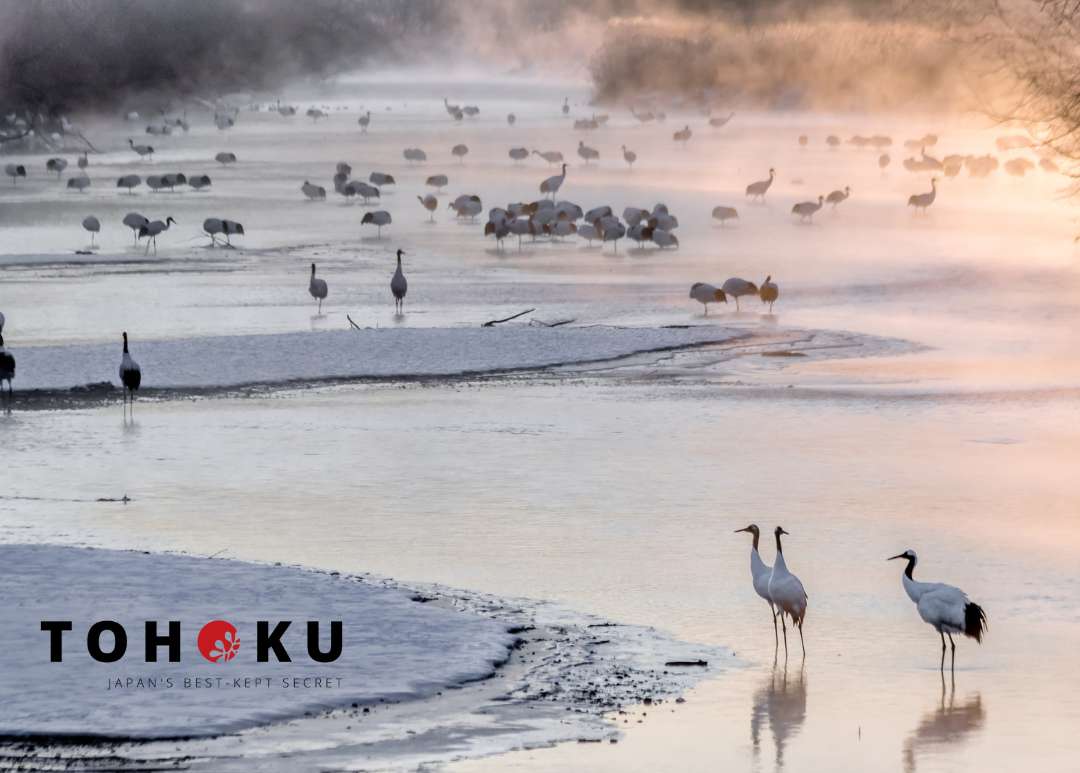
Easily accessible from Tokyo, the Tohoku region is a true gem that visitors to Japan should not miss out on. Stretching from the prefecture of Fukushima, just north of Tokyo, to Aomori Prefecture, south of Hokkaido, the Tohoku region offers heaps of sublime natural landscapes every season and off-the-beaten-path travel opportunities. One of the regions with the most preserved traditions, its authentic and secret atmosphere gives travellers a unique chance to experience Japan’s heritage and culture, just a short hop from the country’s bustling capital. A must-see destination all year long, with enjoyable local festivals and delicious culinary specialties, read through our Tohoku travel guide to plan your next Japan vacation!
Tohoku’s natural treasures through the seasons
Autumn in Tohoku : fall foliage and crimson landscapes
As the long Japanese summer comes to an end, temperatures cool down and the foliage throughout the country changes to beautiful hues of gold and crimson. The changing autumn leaves are known as kouyo (紅葉) in Japanese, and with almost 3/4th of Japan consisting of mountains with dense forests flowing through them and the valleys below, the blanket of warm colour is quite a sight to behold. Tohoku’s rich natural scenery makes it a prime spot to experience autumn in Japan.
We start right at the top of Tohoku in Aomori Prefecture, where travellers can make their way up Mount Hakkoda Ootake via cable car, where they’ll get a bird's-eye view of the forests below. The mountain itself is also notable for its pristine, conical shape, which makes all aspects of the scenery from the cable car especially beautiful. Expect to see the leaves in full autumn colours around late September to October, a bit earlier than other parts of Japan, since Aomori’s northern location makes it notably colder.
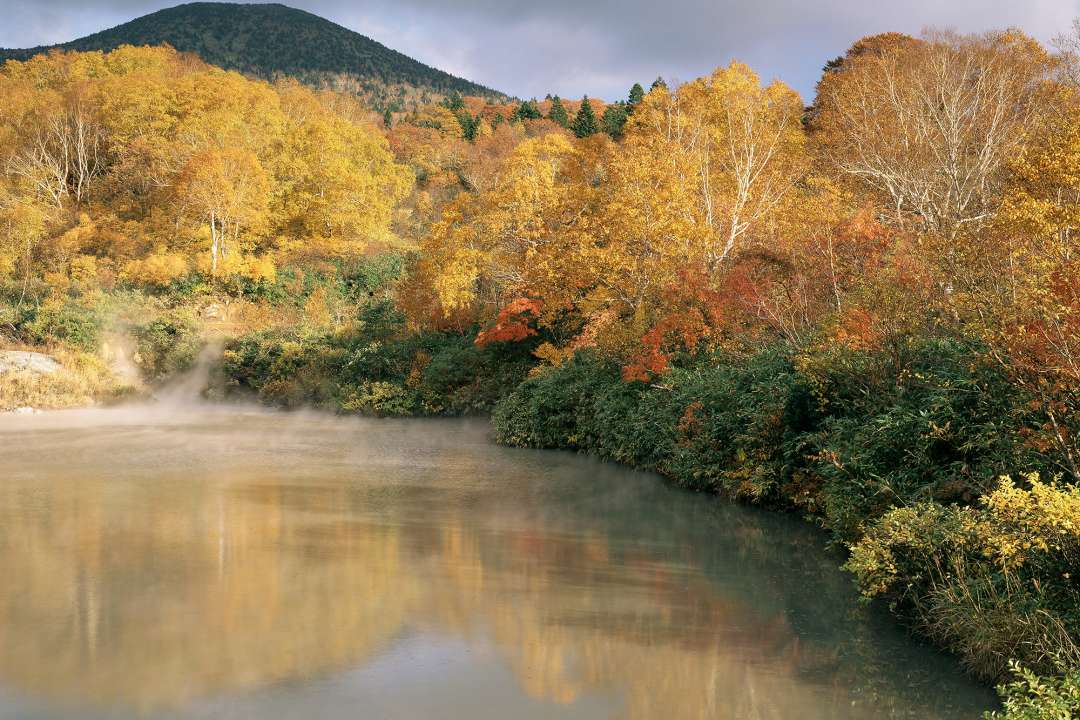
Moving one prefecture down from Aomori to Iwate Prefecture, Geibikei Gorge is a way to see the kouyo like no other. Travellers can traverse down the Satetsu River via boat to see the natural scenery. This is known as funakudari and takes approximately 1.5 hours, allowing riders to slowly take in the view of the high-reaching rock cliffs and calm river. Travellers can expect to see peak autumn leaves from mid-October to mid-November.
Down further into Fukushima Prefecture, pay a visit to Shingu Kumano Shrine in Kitakata. This particular shrine was initially erected in 1055, making it a place rich in history and culture. The scenery around the shrine is worthwhile during all seasons of the year, but in autumn in particular, the 800-year-old ginkgo tree on the grounds right by the shrine’s main building erupts into a beautiful hue of pale chartreuse, with its leaves gradually falling off and flowing around in the wind. At night, the tree is illuminated, allowing its golden colours to glow even further.
Tohoku in the winter : snow monsters and onsen
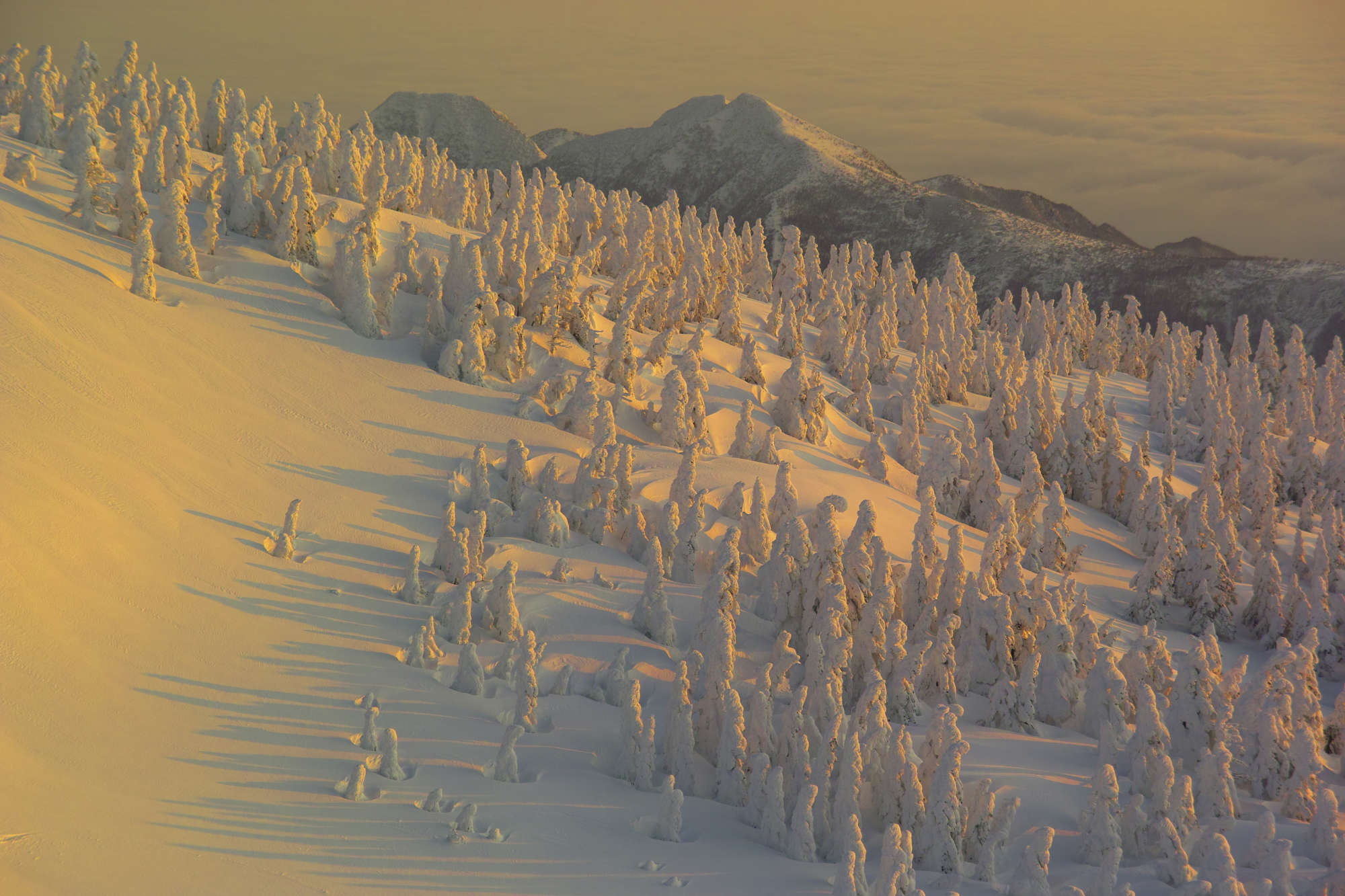
Once all the crimson autumn foliage fall, Tohoku wears its white coat as winter rolls in. As the northernmost region of Tohoku (and thus also on the main island of Honshu), the area receives a fair amount of snow - the city of Aomori even boasts the title of the town with the most snowfall in the world. The sublime autumn landscapes make way for equally stunning vistas in winter, a season when Tohoku shines with its unique scenery, thanks to its particularly cold climate. Frozen waterfalls, temples covered in snow, outdoor steaming hot springs, magnificent blue lakes - exceptional sights that’ll make braving the harsh Tohoku winter worth every second.
In Aomori Prefecture, two winter treasures are a must-see. Both near the city of Towada, the frozen waterfalls of Oirase Gorge and the incredibly blue waters of half-frozen Lake Towada are truly one of a kind. The first is a speedy mountain stream, stretching over a dozen waterfalls, that create a surprising scene in winter: many of the smaller falls and rapids freeze, leaving the landscape stuck in time!
Not far from this beautiful natural phenomenon, Towada Lake - the largest caldera lake on Japan’s main island - offers another winter spectacle. The lake, being over 300 metres deep, never entirely freezes. This depth also gives it a profound blue colour, creating a stark contrast with the white, snow-covered forest backdrop.
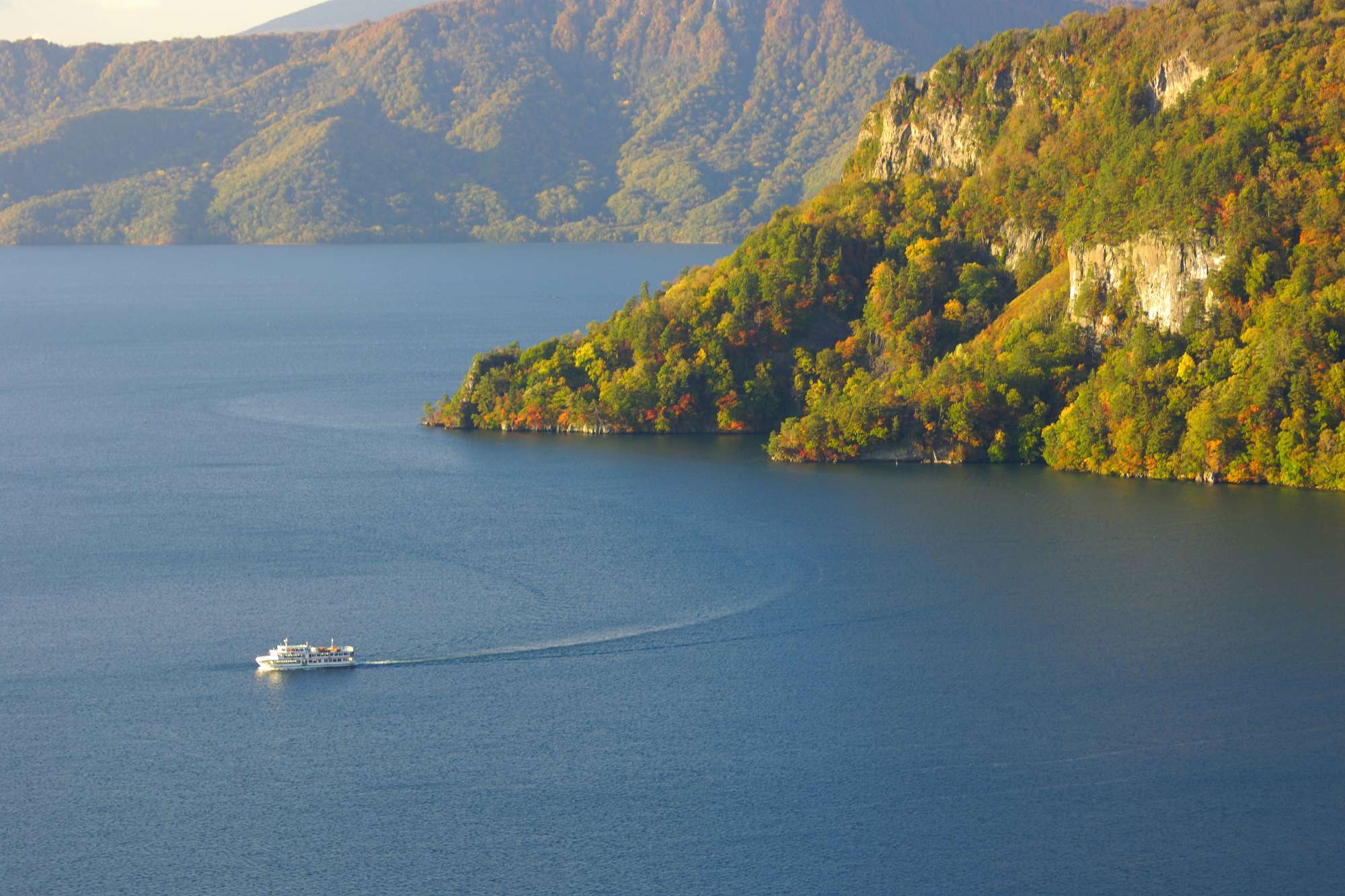
Further south, overlapping Yamagata and Miyagi prefectures, one of Japan’s 100 most famous mountains also boasts some of Tohoku’s most renowned landscapes. On the slopes of the Zao Mountains, a popular ski destination in Japan, snow monsters watch over. Not to worry: you will not cross paths with the infamous yeti in Tohoku, but with juhyō (樹氷), or “frost-covered trees”. This natural wonder, pictured below, is created by droplets of water from the nearby lakes being pushed by the wind, freezing into near-vertical icicles upon touching trees. Snowfall then puts the icing on the cake by sticking to the frozen water, creating this illusion of monstrous snow creatures.
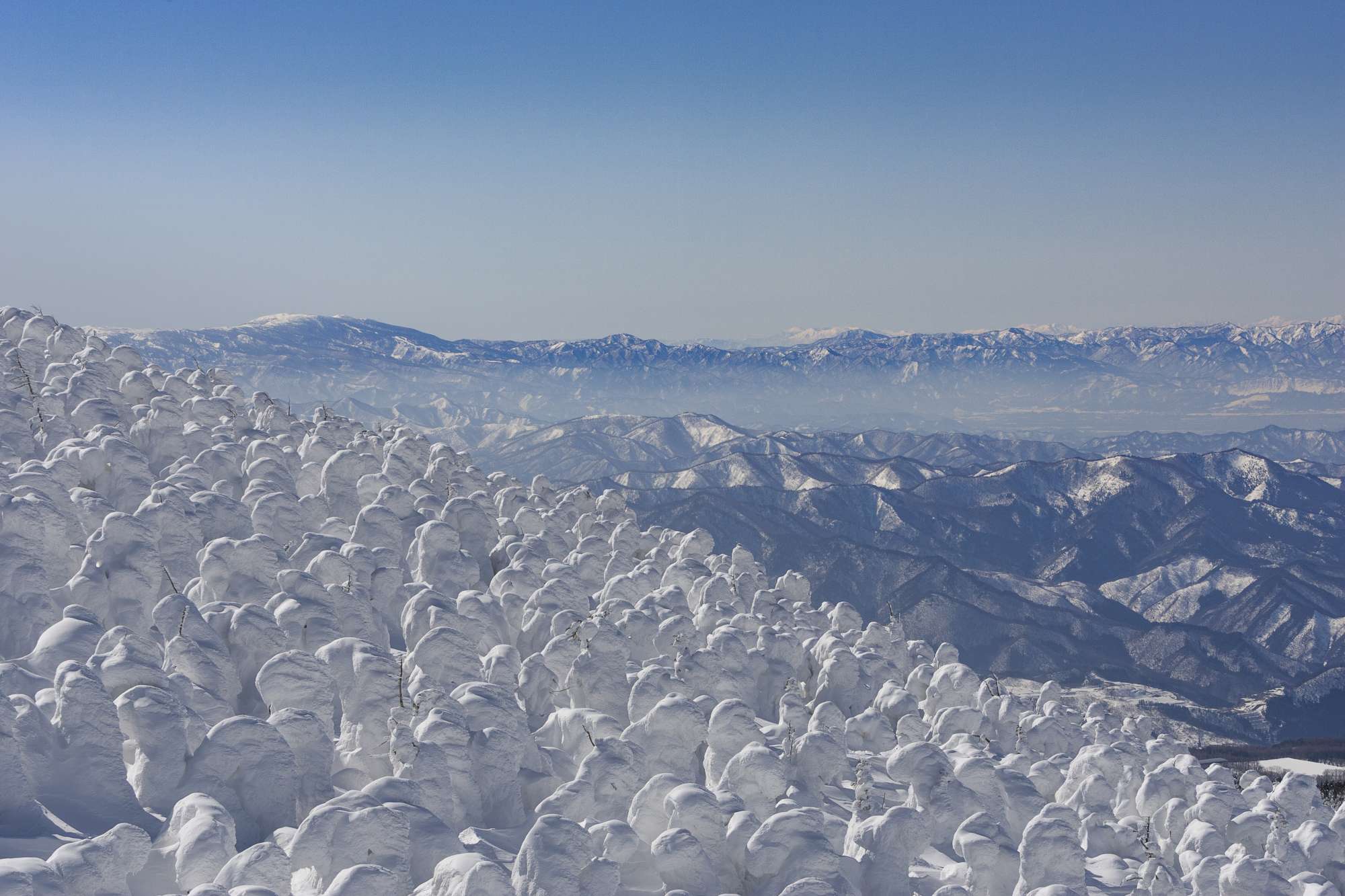
Winter in Japan means enjoying onsens even more than the rest of the year, and Tohoku is no exception. The region actually features some of the country’s best and most famous onsen towns, alongside the southern island of Kyushu. Most notably, Ginzan Onsen, in Yamagata, is one of the most renowned hot spring towns in Japan. This picturesque, postcard-perfect village, with a 500-year-old history, combines traditional wooden ryokans with modern luxury establishments in a setting straight out of a Ghibli movie.
In Akita prefecture, Nyuto Onsen is also worth a detour: its outdoor hot springs offer an unforgettable experience, bathing in steaming hot water in the middle of snowy mountains and forests.
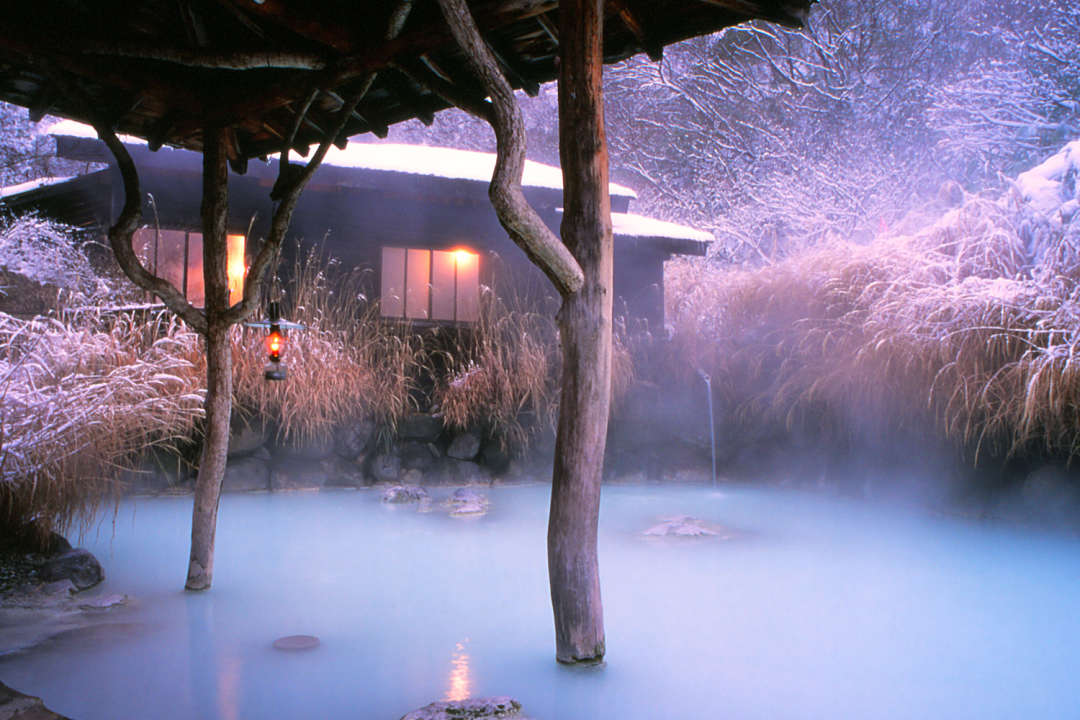
The beauty of Spring cherry blossoms in Tohoku
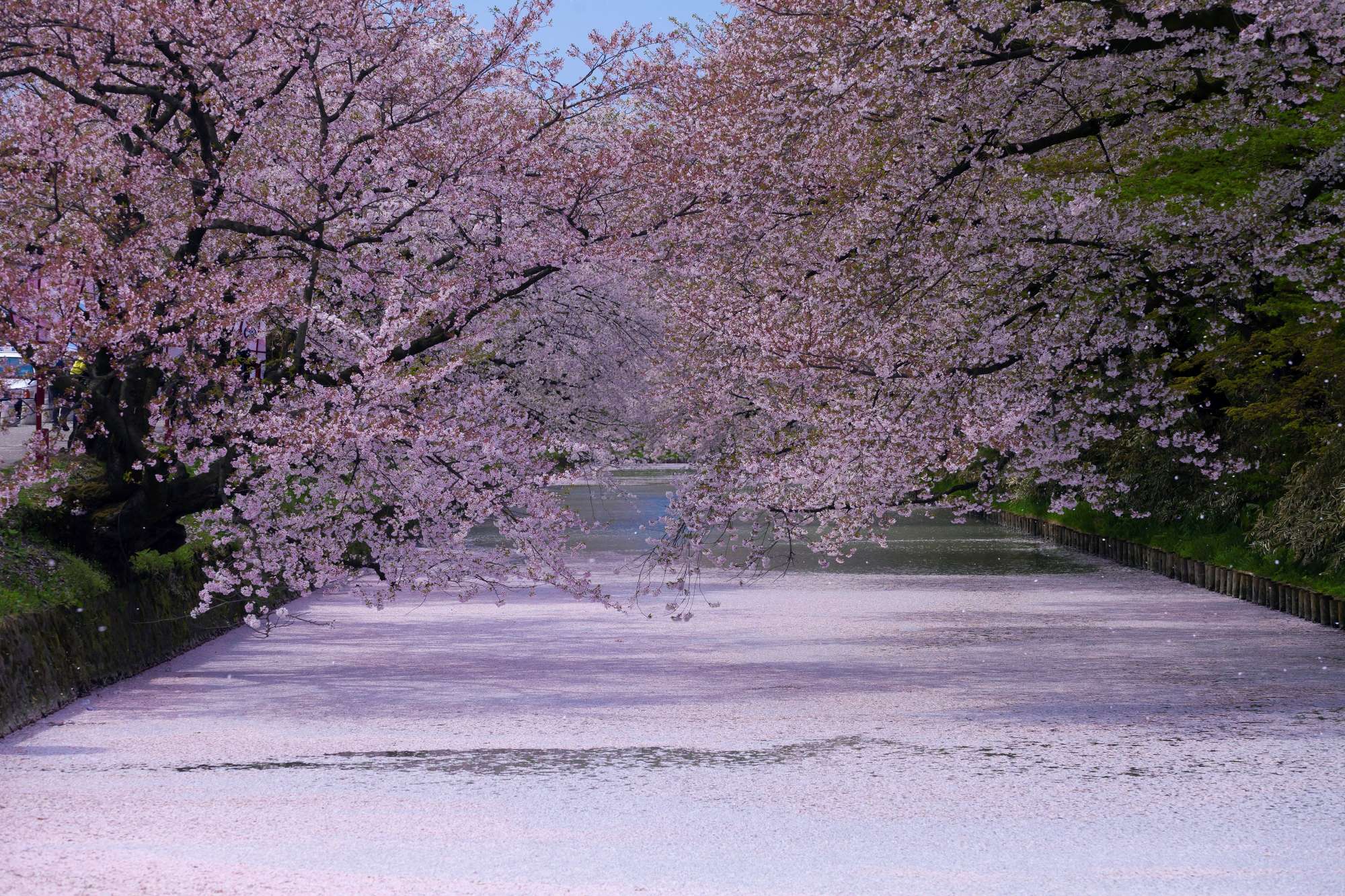
Arriving later than the rest of Japan as the region is further north, cherry blossom season in Tohoku takes place from April to May. Boasting some of the country’s most beautiful nature and scenery, the Tohoku region is one of the best places to admire the new cherry blossoms. This later sakura season also means fewer crowds and more affordable travel than the rest of Japan, for equally stunning landscapes. Across the region, many scenic sakura-viewing spots await you - including some of the best in Japan.
In Aomori prefecture, Hirosaki Castle (and its park) is one of Tohoku’s highlights when it comes to sakura festivals. Each spring, the slopes and valleys of the park turn to a sea of pink as the cherry blossoms bloom, a sublime backdrop for the historic castle. The park’s waterways fill with the falling petals, creating an even more surreal atmosphere.
Further south, in Iwate Prefecture, Kitakami Tenshochi Park, along the Kitakami River, 10,000 cherry blossom trees line up to create a breathtaking path. You can admire this natural wonder by foot, stopping at the food stalls on the way, or on a scenic cruise.
Another unmissable sakura-viewing spot is Kakunodate, an historic samurai town in Akita prefecture. More than the preserved samurai houses that are now museums you can visit to learn more about this local heritage, Kakunodate’s highlight is the 2-kilometre-long Hinokinai riverside, lined up with blossoming cherry trees.
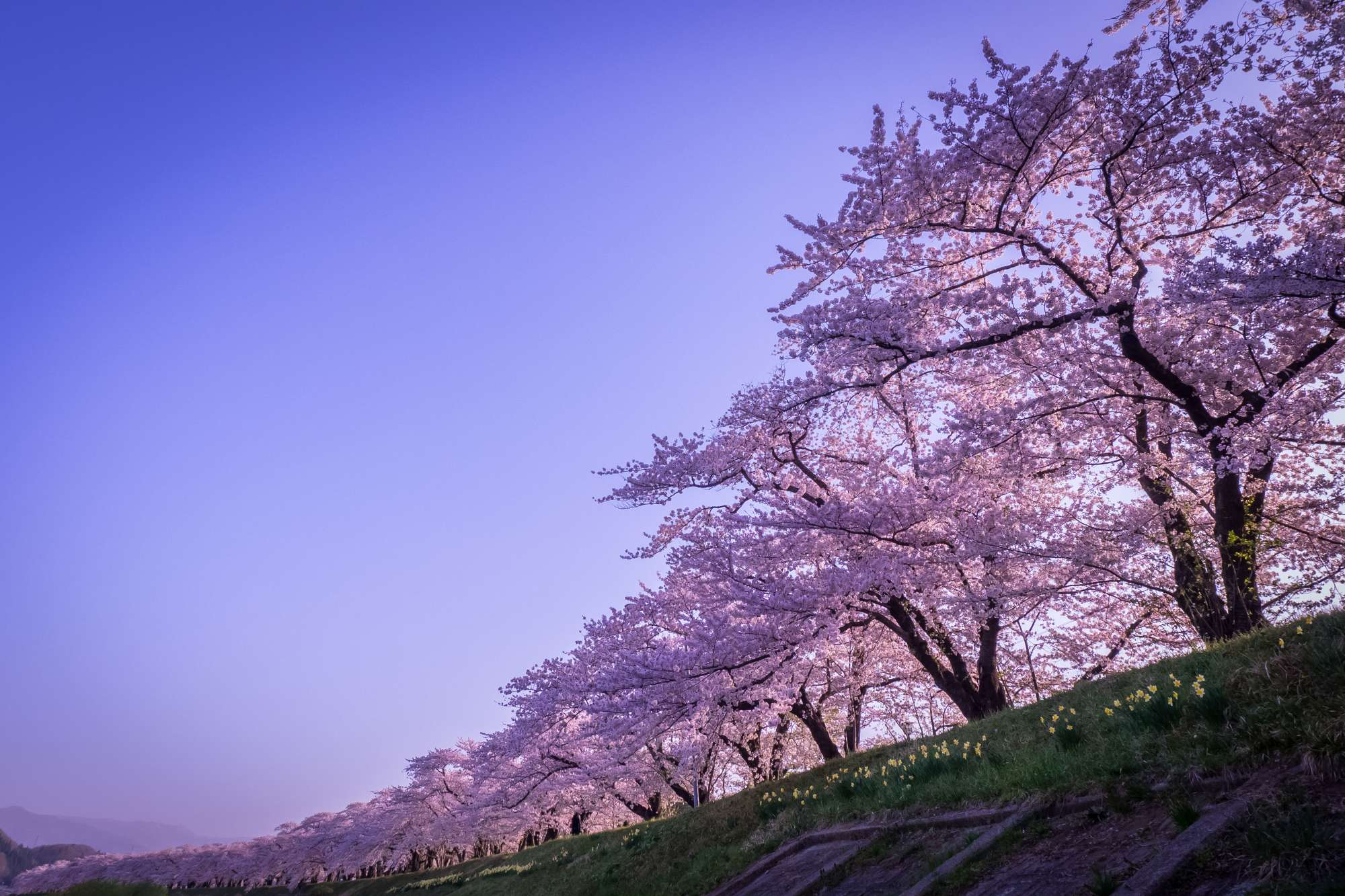
These are just a few of the many scenic spots to bask in the sakura season in Tohoku, and with such numerous natural landscapes throughout the region, it shouldn’t be hard to find a spot to see beautiful cherry blossoms.
Summer festivals and pristine waters in Tohoku
While summertime heat in Japan can be intense, it’s also a season where a lot of fun can be had. In Tohoku, it’s the season for matsuri, Japanese festivals with different types of fanfare, food stalls, games, and traditions, and fun days out by the water! Tohoku boasts an array of different festivals with unique character for visitors to go and see, and the more northern location of many of these prefectures makes them a great getaway during the hotter months.
In Tohoku in particular, the region is well-known for its three great summer festivals: the Nebuta Festival in Aomori, the Kanto Festival in Akita, and the Tabanata Festival in Sendai.
Nebuta is characterised by its precession of large floats that are created in the image of historical Japanese figures and folklore. These floats are pushed by hand by large groups of participants wearing traditional matsuri garb. The floats themselves are illuminated during the night processions, showing their vivid coloration and intricate design, as shown below.
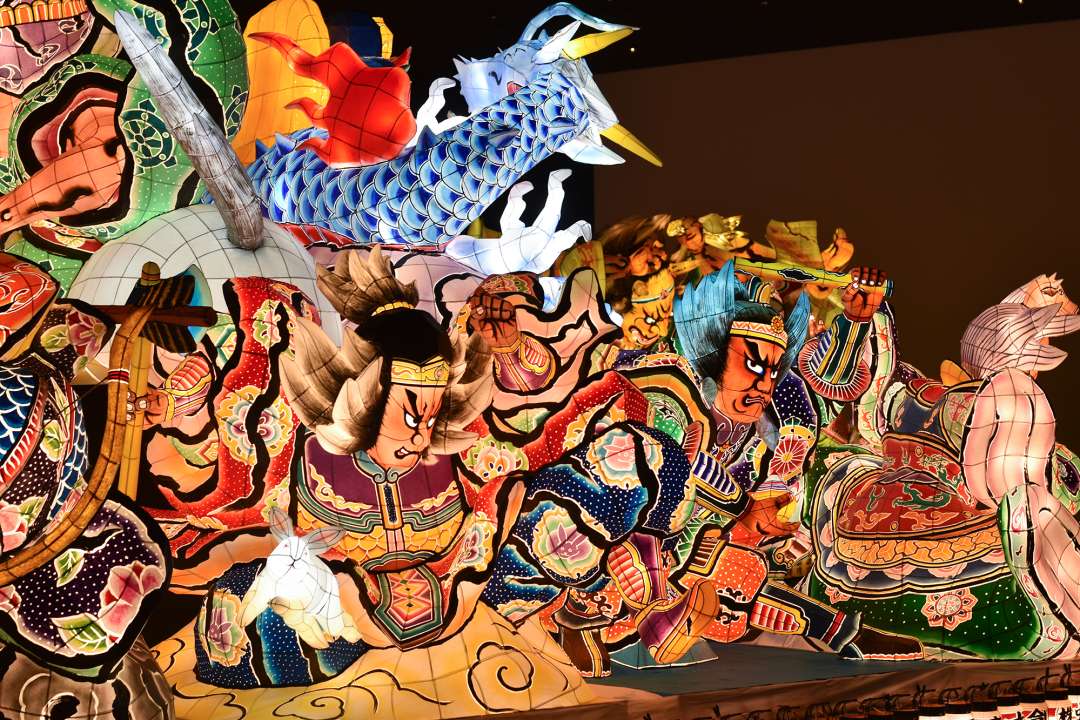
The Kanto Festival in Akita is of comparable energy and fanfare. During this matsuri, participants take hand-held, lantern-adorned poles and handle them in very spectacular and impressive ways, such as balancing them on one hand, on the belt of their traditional matsuri clothing, and even on their foreheads. Be sure to try Babehara Ice Cream, a type of ice cream served in a cone in the colours and shape of a tulip.
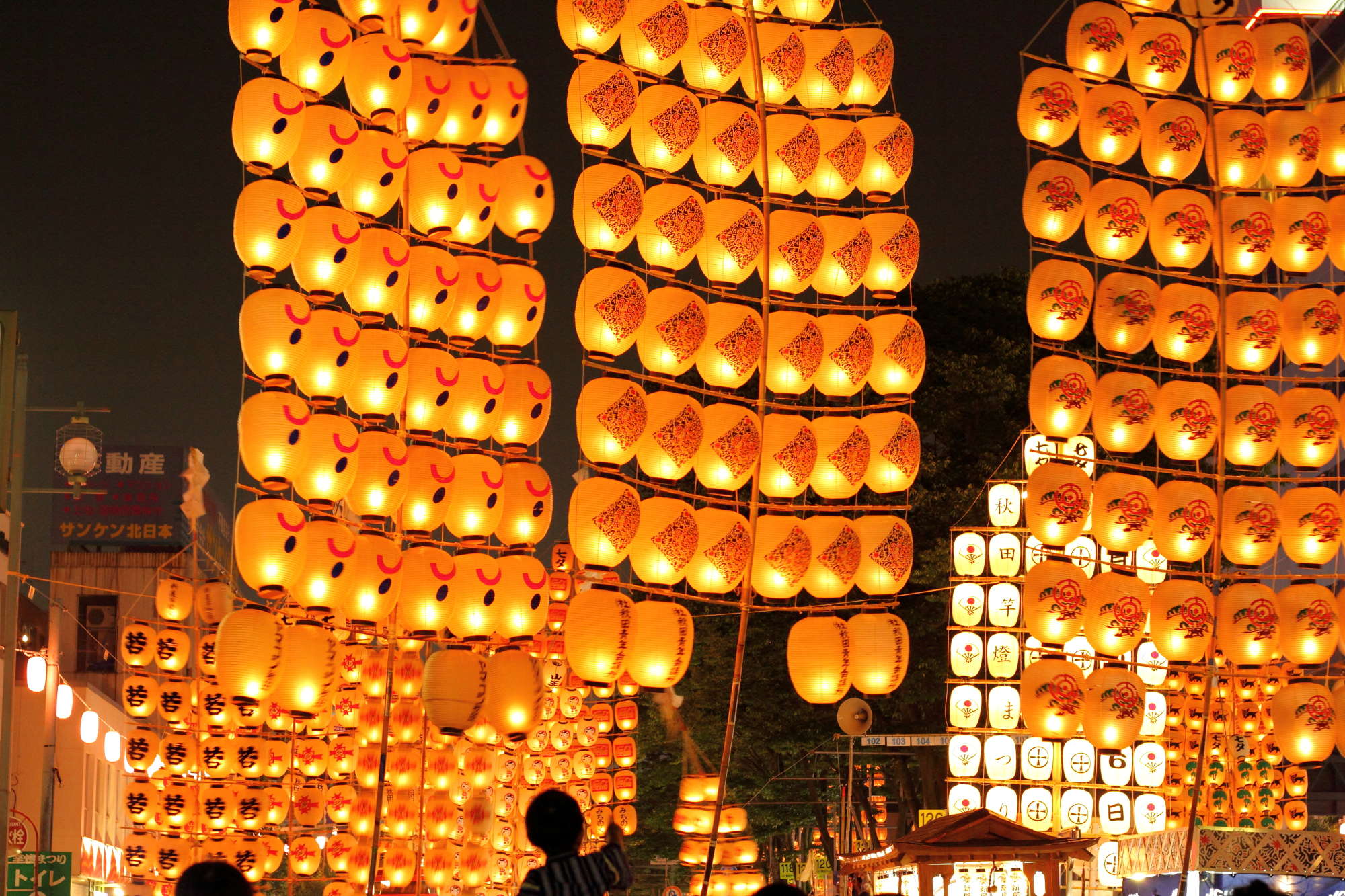
Tanabata is a traditional Japanese holiday that is celebrated throughout the country in the summer. It’s typically celebrated on July 7th, but the Tanabata Festival in Sendai, Miyagi Prefecture, is celebrated a month later, from August 6th to 8th. This festival is notable for the colourful decor that is adorned throughout Sendai, such as bamboo stalks with coloured pieces of paper with people’s wishes written on them, small paper kimonos (kamigoromo), and paper windsocks (fukinagashi).

Simultaneously great to enjoy in Tohoku are the great seaside scenery and beach activities. The upper part of Honshu Island, where Tohoku resides, is made up entirely of prefectures prominent coastlines, blessing each destination with seaside fun.
One of the most iconic coastal sites in all of Japan is Matsushima Bay in Miyagi Prefecture. The rocky geography creates a very distinct scene for onlookers, often referred to as a real-life Hokusai painting and considered one of the Nihon Sankei, Japan’s three most iconic views.
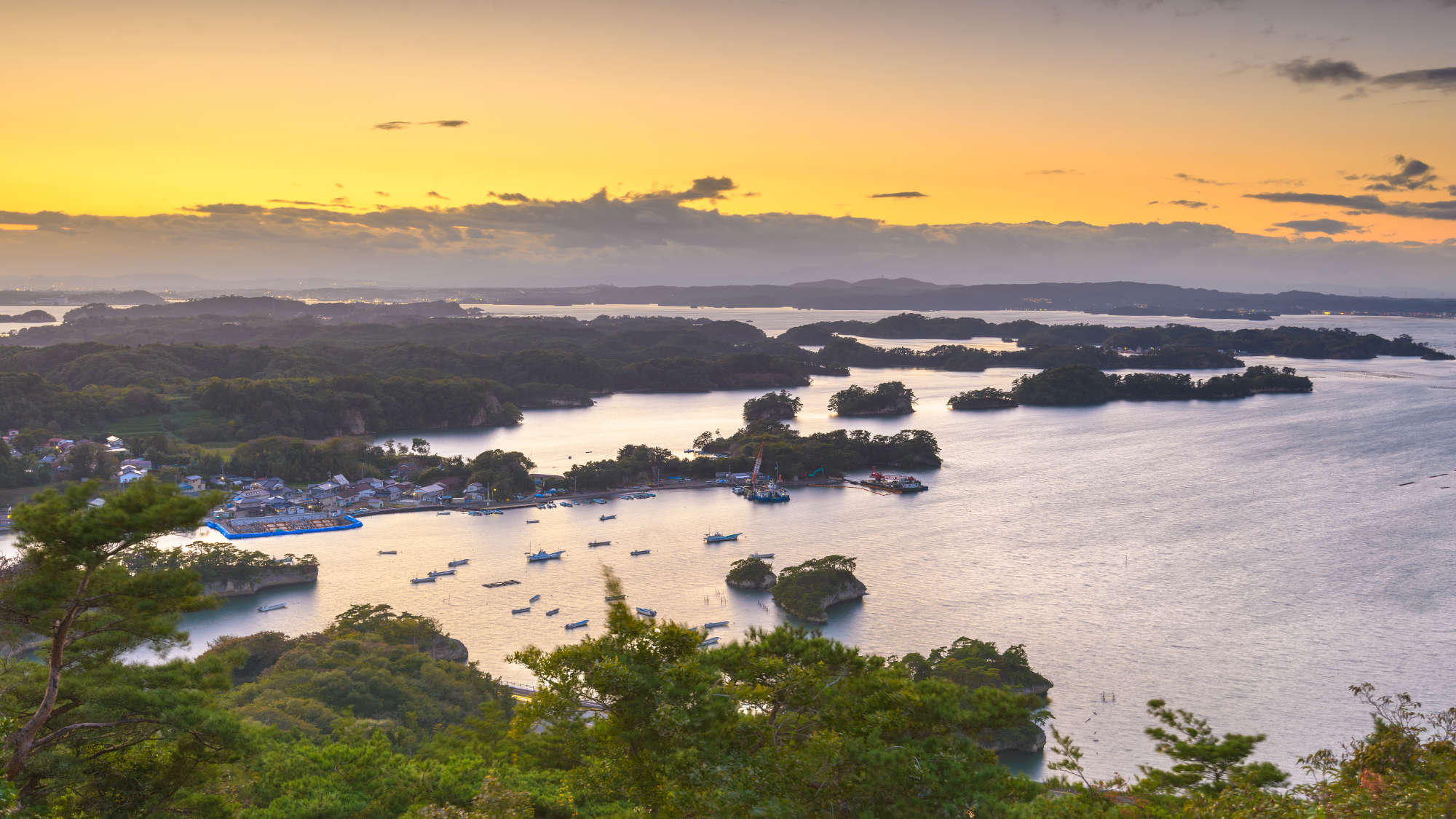
In Iwate, travellers can engage with the local population of ama divers, free-divers who scavenge for shellfish and other treasures at the bottom of the oceans and who are traditionally all women. Iwate is the most northern prefecture where ama diving culture is still prominent, and at the Kosode coast, visitors can watch the divers in action, interact with them, and indulge in the delicious ingredients they cultivate from the ocean floor.
Right at the bottom of Aomori Prefecture, right above the border with Iwate, is Hachinohe, a coastal town overlooking the Pacific Ocean. Tanesashi Beach is a must-visit location with its rocky beaches and rolling, grassy environs. Simultaneously, Kabushima Island exists a short distance from the coast and is home to a distinct shrine. The island is inhabited by a species of seagull with a distinct black tail. Known as Umineko in Japanese, the name translates to “sea cat.”
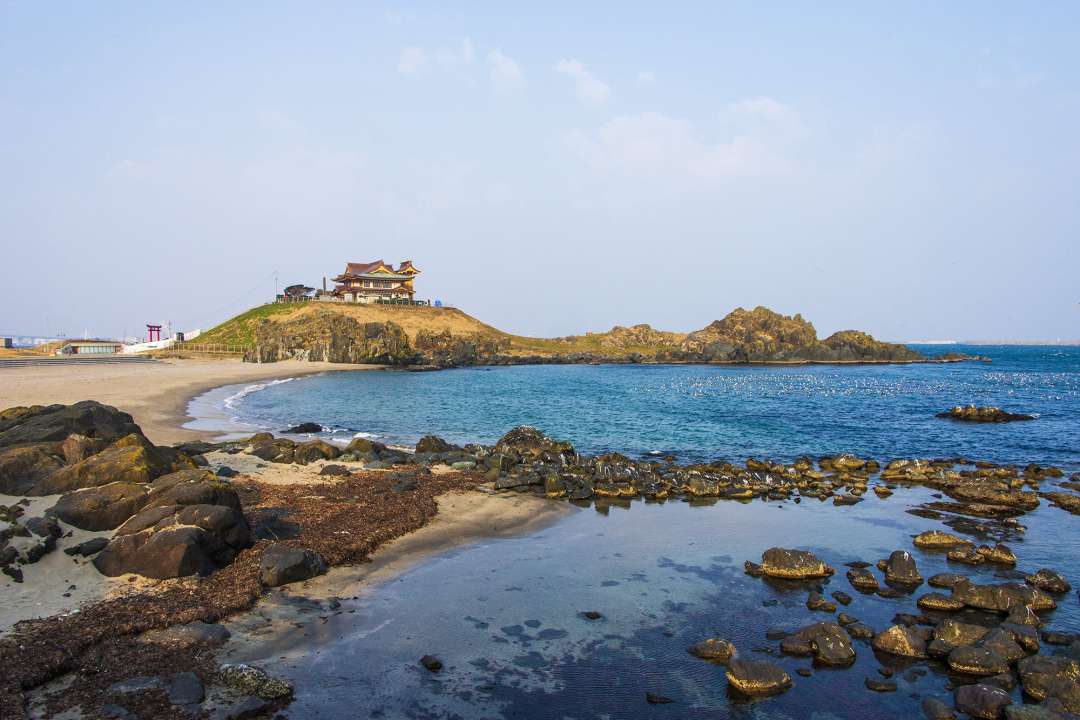
Tohoku : unique festivals, food specialties and scenic spots
A year of festivals in Tohoku
While summer in Tohoku is the most well-known time for festivals, the region hosts a number of matsuri throughout the year, with different celebrations at their centre.
During spring, at the end of May, Sendai is home to the Aoba Festival. This festival is derived from the traditions brought to the area by the Date Clan and takes place throughout the weekend. One of the biggest spectacles during this time is that of the Suzume Odori dancers on Saturday, with a grandiose parade on Sunday featuring a large Yamaboko (Japanese-style float) at its centre. The springtime weather makes enjoying the festivities throughout the day comfortable and refreshing, and the blooming foliage of Sendai at the end of May is one to behold.
In winter, Akita takes advantage of the prominent snowfall that results from the prefecture’s northern geography. The Yokote Snow Festival takes place in the city of the same name in the southern portion of the prefecture. It is largely noted for the kamakura snow structures built throughout the city, which are essentially snow-constructed igloos with small altars set up inside in dedication to the traditional water gods of Japan. These altars illuminate the interior of the kamakura igloos, causing the structures to glow in the night throughout the city, creating a truly one-of-a-kind way of enjoying the snowy scenery that is famous in Tohoku.
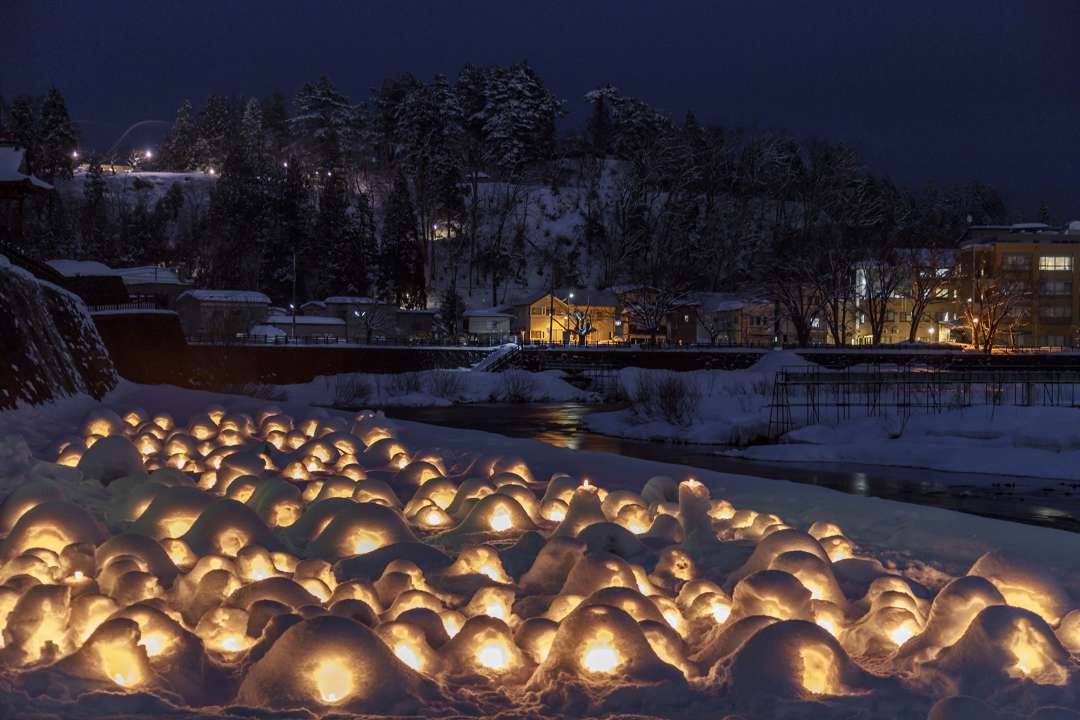
Finally looping back to summer, Morioka in Iwate Prefecture booms with the sound of pounding drums and chanting dancers with the Sansa Odori Festival. This festival is famous for its processions of taiko drummers alongside dancers performing in dedication to the local Mitsuishi Shrine. The parade at the heart of the festival is accompanied by the “Miss Sansa Odori” spectacle, which consists of a number of women adorned with elegant and vibrant kimono as they dance along with the rest of the procession. Onlookers can also participate in a ring dance of the awa odori, a traditional, late-summer practice in Japan during festival season.
Michinoku Coastal Trail
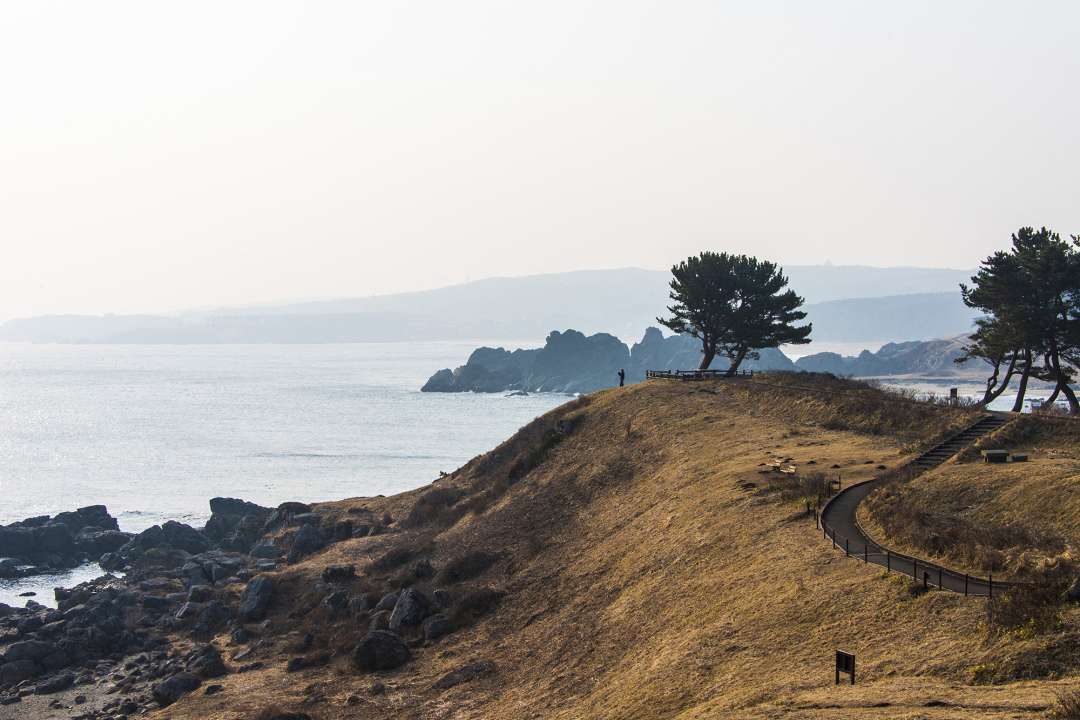
Stretching over 1000 kilometres, a new hiking trail can be found in the Tohoku region along its eastern coast, traversing some of Japan’s most scenic spots. The Michinoku Coastal Trail starts at Hachinohe City in Aomori Prefecture and ends in Soma City in Fukushima prefecture - or inversely. The Tohoku region features rugged and untouched landscapes along its Pacific coastline, making this trail a unique opportunity for hikers and outdoor lovers alike to experience Japan’s characteristic natural beauty. And with plenty of accommodation options, cafés and restaurants as well as onsens to stop by throughout Michinoku Coastal Trail, everyone can go at their own pace to discover the region’s gorgeous environment as well as its authentic culture.
One of the 10 long-distance nature trails of Japan, the Michinoku Coastal Trail takes around 50 days to complete. Obviously, most people will select a portion of the hiking trail according to their trip duration. Walking along the Tanesashi coastline is a popular route for example, thanks to its many scenic viewpoints, long stretches of sandy beaches, creeks and rugged rock formations, along with many shrines along the way. Being only just over 15 kilometres long, it’s entirely possible to make it a day hike!
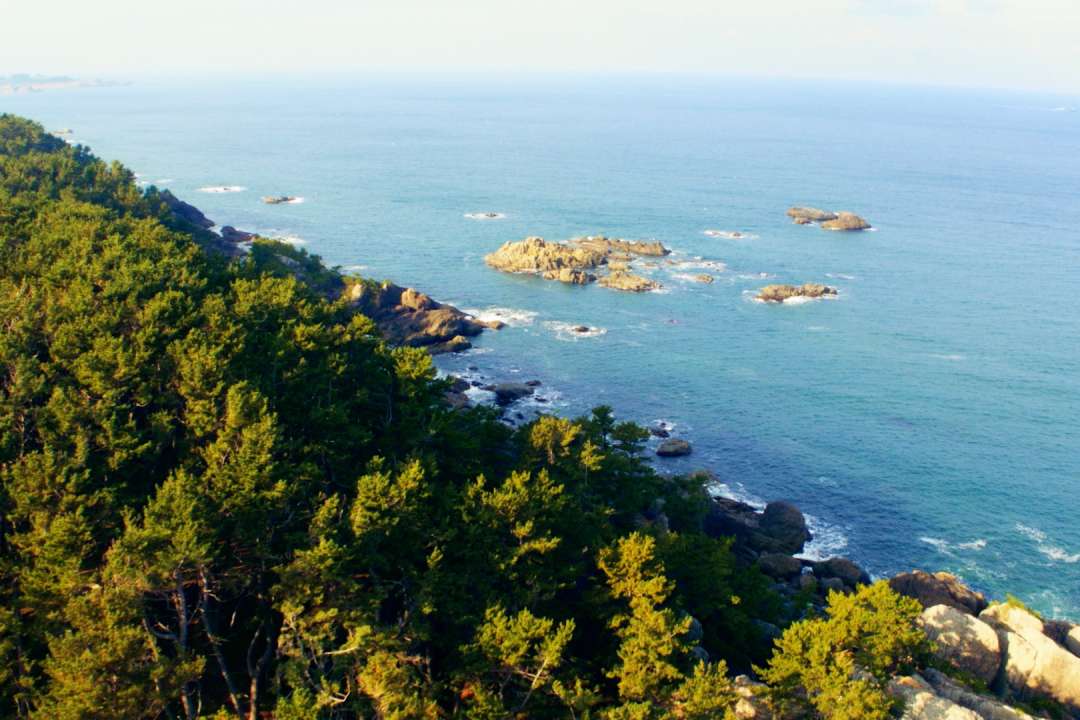
In total, around 30 one-to-three-day hikes compose the Michinoku Coastal Trail, with visitor information centres to stop by and meet other hikers throughout. The project for this hiking itinerary began in 2012 to highlight the severely-hit region after the 2011 Fukushima earthquake. Portions of the trail were established little by little, until the full 1,025-kilometre route was rolled out in 2019. Since then, it has been awarded multiple times as one of the most beautiful hiking trails in the world.
Food specialties to try in the Tohoku region
A region as rich in nature as Tohoku has a medley of high-quality ingredients to choose from, which has contributed to the region’s prolific and diverse food culture.
In Sendai, no dish is as closely associated with the city as gyutan (Japanese for beef tongue). Thick cut and grilled over open fire, Sendai beef tongue is renowned for its smoky, robust flavour and spongy, yet tender, texture. It’s traditionally served with barley-mixed rice, Japanese pickles, and an oxtail soup. There are two primary chain restaurants with locations throughout Sendai: Rikyu and Kisuke, both of which are reliable staple options. However, the dish was originally created at Ajitasuke, whose original shop is still open, with the menu largely unchanged since the beginning.
Morioka and its three famous noodle dishes are often the first to come to mind and are a major attraction for any foodie residing in or visiting Japan. This noodle trifecta consists of wanko soba, reimen, and jajamen.
Wanko soba is distinct due to it being served in a way that is gamified, with individual servings being provided to customers in small bowls that are stacked to count. Reimen is based off of Korean Nangmyeon, so it is served cold with chewy, clear noodles, topped with kimchi, and even a piece of fruit! Finally, jajamen is a noodle dish topped with a meat-based miso. After eating the noodles, a raw egg is often cracked into the remaining broth to cook and mixed with rice, providing diners with a whole new dish to finish off their meal!
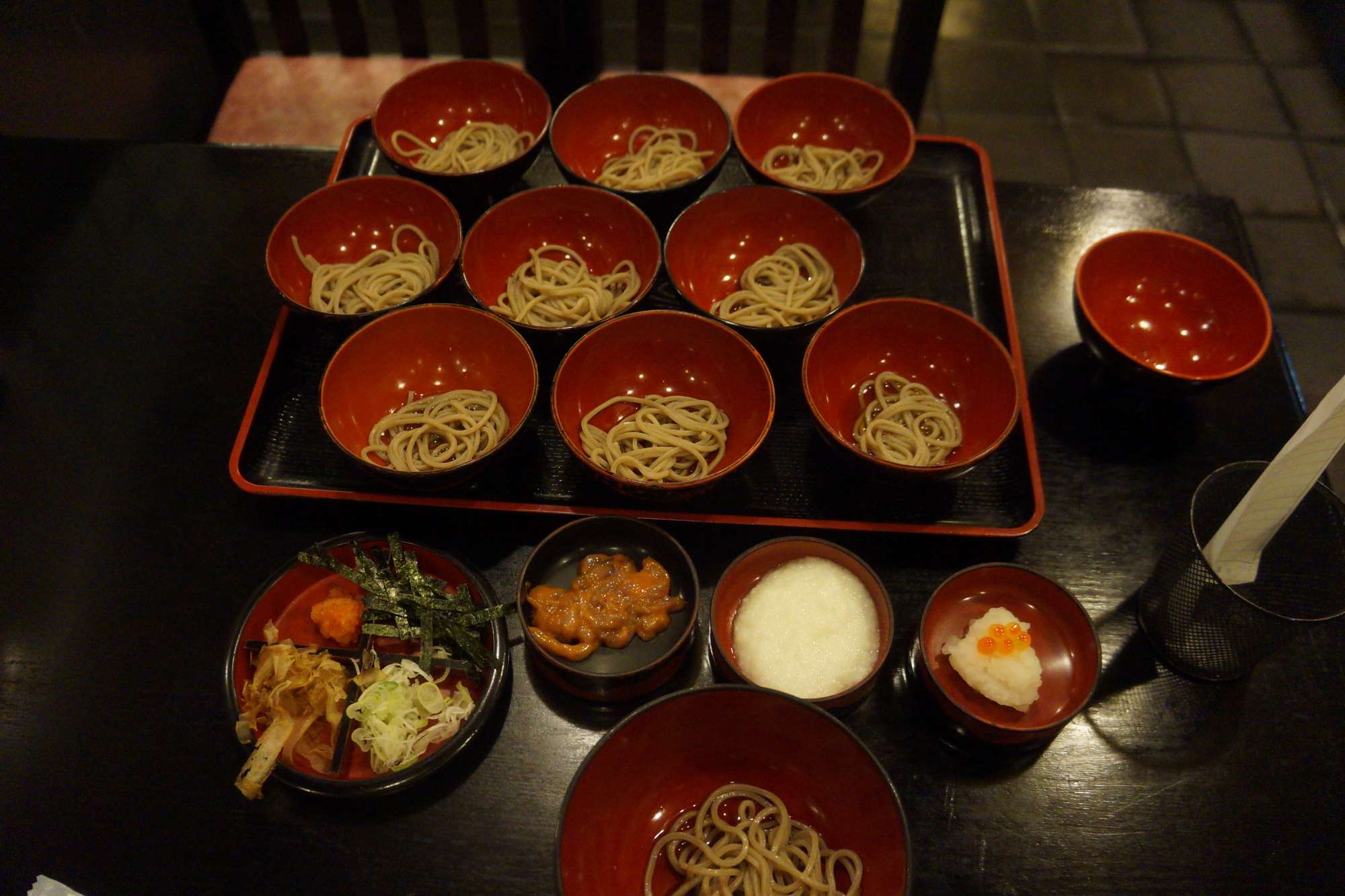
Azumaya is a famous spot for wanko soba, visited by locals and visitors alike. Reimen is often served at a number of Yakiniku restaurants, such as PyonPyonya, but Yakiniku Yonai in downtown Morioka is another popular option with locals. Kozukata is a well-established Jajamen spot with a variety of different toppings to choose from. During summer, keep an eye out for hiyashi jajamen, a chilled version of the dish to be eaten during the warmer months!
Moving up north brings us back to Aomori. Aomori is right below Hokkaido, with the Tsurugu Strait separating the two. This body of water boasts some of the best seafood in all of Japan due to its cold temperatures, and thus, Aomori-sourced fish is often seen at the country’s most prestigious sushi shops. Especially famous here is the maguro (tuna) from Oma. In fact, the most expensive tuna ever sold came from here, going for 36 million yen, or slightly under £200.000! Visitors won’t have to shell out that much for a taste of high-quality tuna, but it does give an idea of how prized the catch from this region is. Also famous in Aomori are shellfish, such as scallops and abalone. A popular spot to try the best Aomori has to offer is Furukawa Fish Market, but not far away is Sushi Ippachi, which has an English menu and a varied selection of ingredients for diners to try.
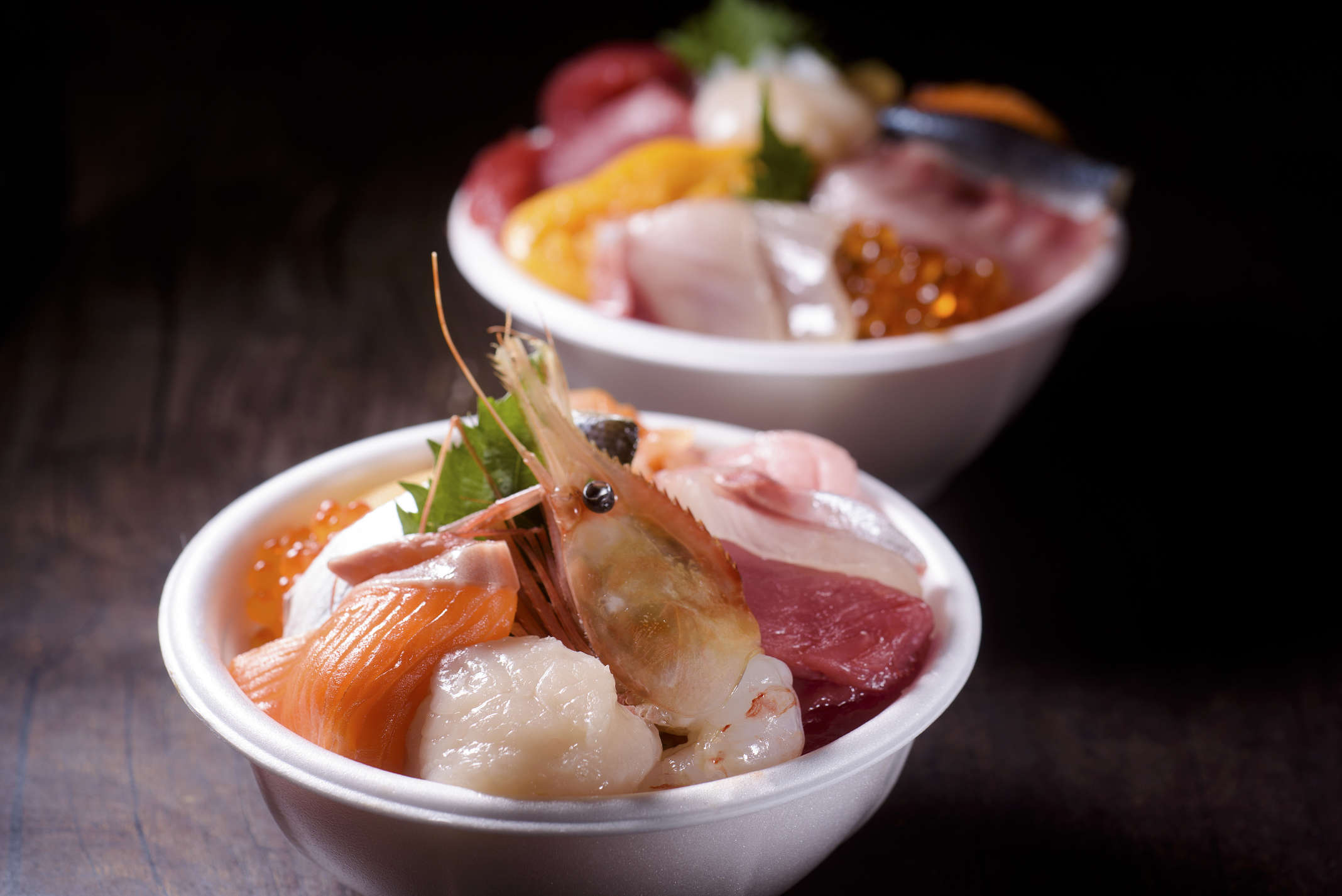
World-renowned Tohoku scenic spots
As mentioned above, the Tohoku region and its six prefectures boast some of Japan’s most beautiful landscapes and scenery. With coastlines facing both the Pacific Ocean and the Sea of Japan, mountain ranges, lakes, and green valleys, Tohoku offers an unrivalled panorama of beautiful sights to set your eyes on.
At nearly the perfect halfway point between the cities of Akita and Morioka, Lake Tazawa is a gorgeous natural wonder. The deepest lake in Japan, at 423 metres, this near-perfect circular lake offers magnificent reflections and views of the surrounding mountains and forests. During the summer months, it’s possible to jet-ski and sail on the lake’s pristine sapphire-blue waters.
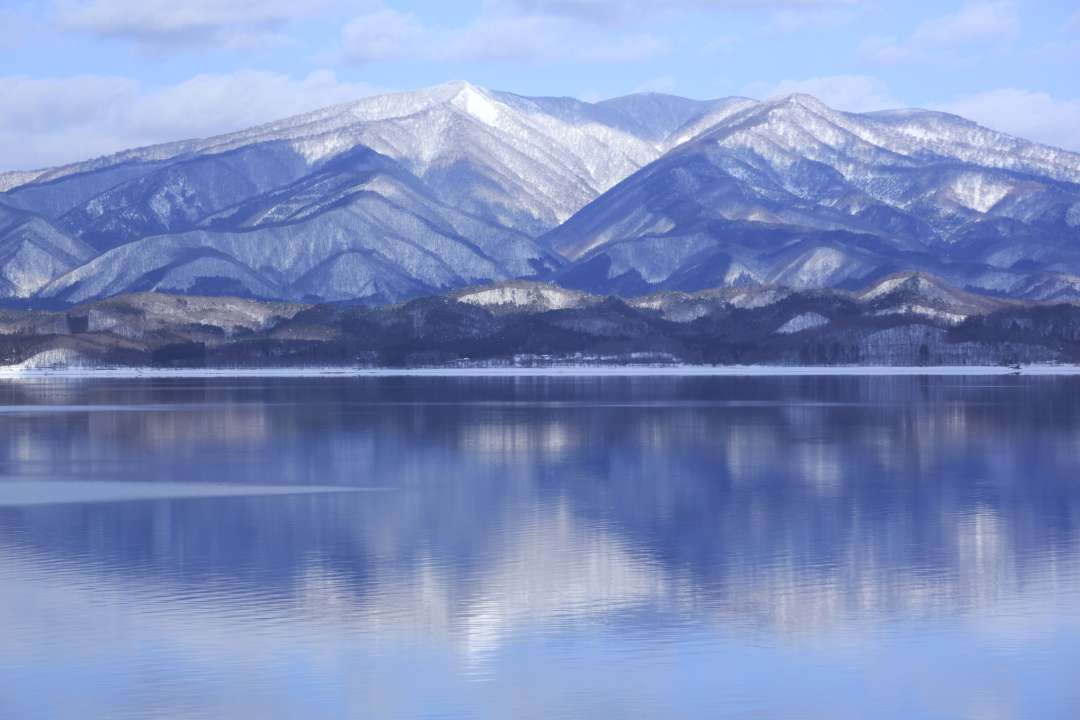
The Tamagawa River created the high cliffs and cascading waterfalls in the Dakigaeri Gorge, a hidden natural treasure in Akita Prefecture. Don’t miss the magnificent Dakigaeri Falls, which cascade into a tranquil pool and produce an amazing natural spectacle. The gorge transforms into a tapestry of vivid colours in the fall, making it a must-visit location for hikers and nature enthusiasts looking for a peaceful haven in Tohoku's unspoiled splendour.
In Iwate Prefecture, another world-renowned gem highlights Tohoku’s historical significance. Hiraizumi, a city steeped in history and culture, particularly stands as a testament to Tohoku's rich heritage. Its crowning jewel, Chuson-ji Temple, a UNESCO World Heritage Site, showcases the golden Konjikido Hall, exuding an aura of timeless elegance amid a backdrop of serene landscapes. It offers a unique glimpse into a bygone era, where art and spirituality meld seamlessly in a picturesque setting.
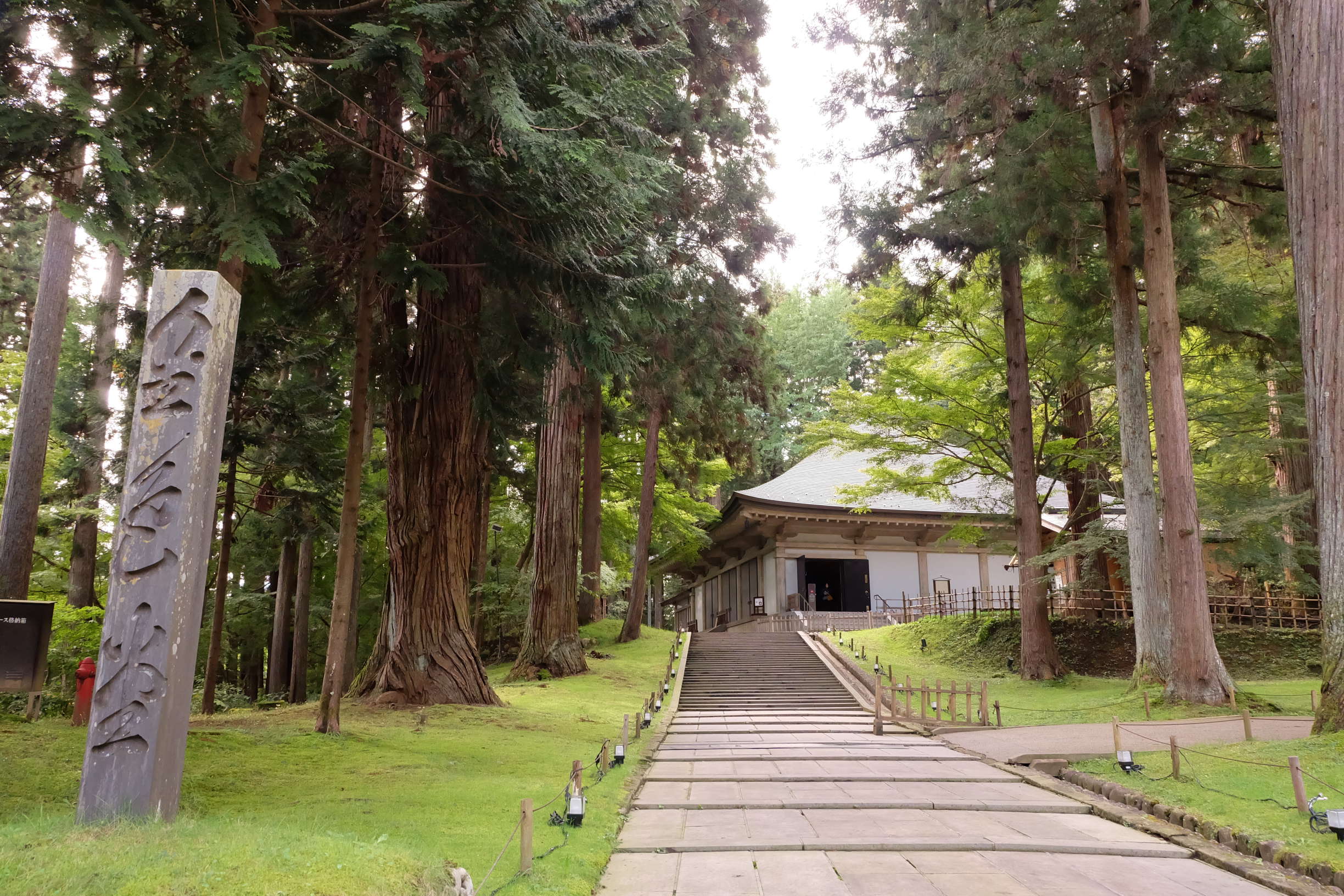
Getting to Tohoku and travelling within the region
Access to Tohoku’s main cities by train
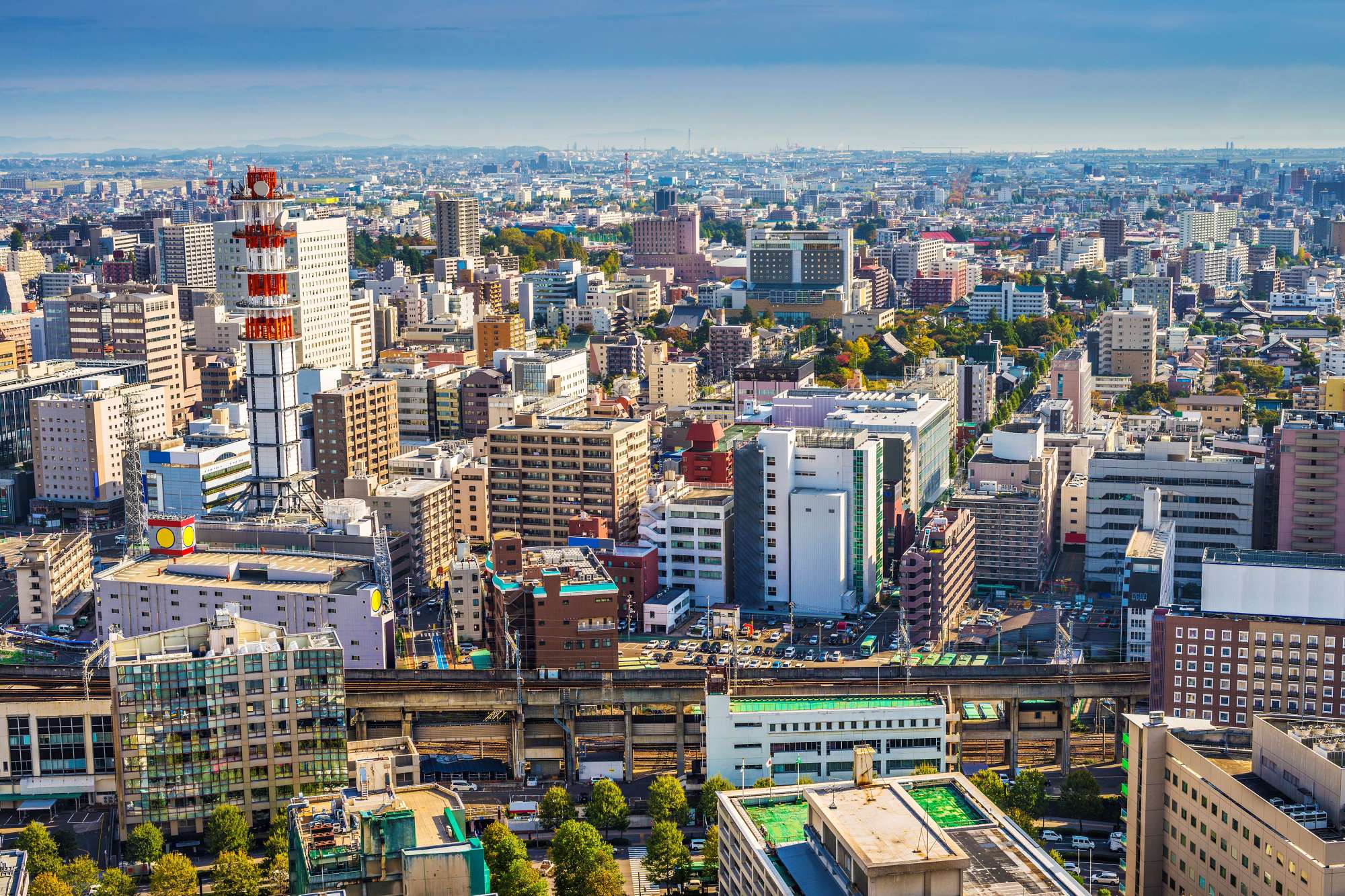
The major cities of Tohoku are as follows: Sendai in Miyagi Prefecture, Fukushima City in Fukushima Prefecture, Akita City in Akita Prefecture, Yamagata City in Yamagata Prefecture, Morioka in Iwate Prefecture, and Aomori City in Aomori Prefecture. It’s at these major cities that travellers can establish a home base when visiting each respective prefecture in Tohoku, as not only will they be cultural hotspots with a variety of different attractions within them, but access to other parts of the prefecture will likely be easiest from these cities.
Fortunately, each of these major cities is accessible via Japan’s longest high-speed Shinkansen bullet train line, which can be ridden either with the National Japan Rail Pass or the JR East Tohoku Pass. There are five different Shinkansen bullet trains that service the Tohoku Region:
- Hayabusa Shinkansen Bullet Train: Departs from Tokyo and goes up to Shin-Aomori/Shin-Hakodate-Hokuto.
- Hayate Shinkansen Bullet Train: Traverses between Morioka in Iwate and Shin-Aomori in Aomori.
- Yamabiko Shinkansen Bullet Train: Goes between Tokyo and Sendai in Miyagi Prefecture with limited stops.
- Nasuno Shinkansen Bullet Train: Connects Tokyo and Tochigi Prefecture with services to Oyama, Nasushiobara, and Koriyama.
- Aoba Shinkansen Bullet Train: Stops at all stations between Tokyo and Sendai.
These Shinkansen lines will be the fastest means of going between major destinations throughout Tohoku, with a lot of convenient options from Tokyo. There are even a number of Shinkansen bullet trains that traverse shorter distances within Tohoku, often utilised by residents of the region for local travel and business trips.
Getting around within Tohoku by train
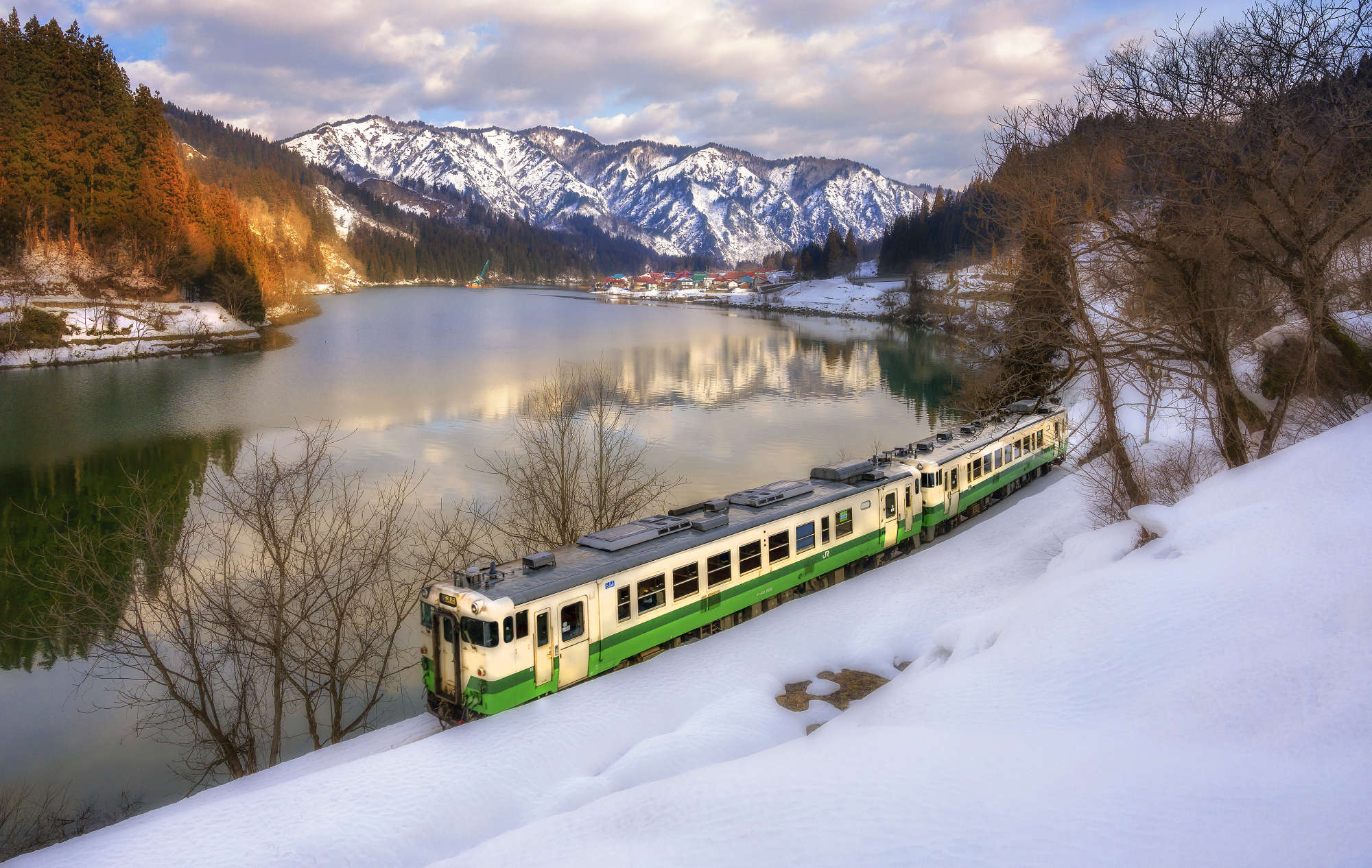
Once in Tohoku and its respective prefectures, different train lines aside from the Shinkansen bullet trains can be ridden to get to more localised destinations or to places where the Shinkansen doesn’t go.
These include limited express and local trains such as the Ou Main Line (coloured orange), which is a long-spanning train line that goes from Fukushima, through Akita, and out to Aomori with a number of spots in-between. There is also the Tsugaru Limited Express Train, which operates between Aomori, Hirosaki, and Akita.
Transportation from major cities to other destinations within prefectures for detours or day trips is easily achieved with these non-Shinkansen train lines. For example, those taking a trip out to Miyagikyo from Sendai to visit the Nikka Whiskey Distillery can take the JR Senzan Line out, and for those staying in Fukushima who wish to go to Aizu-Wakamatsu, taking a combination of Shinkansen and local trains is quite easy, with the Shinkansen being ridden to Koriyama then the JR Tohoku Line out to Aizu-Wakamatsu. This route is especially convenient with either the Japan Rail Pass or JR East Tohoku Pass, as both trains will be covered.
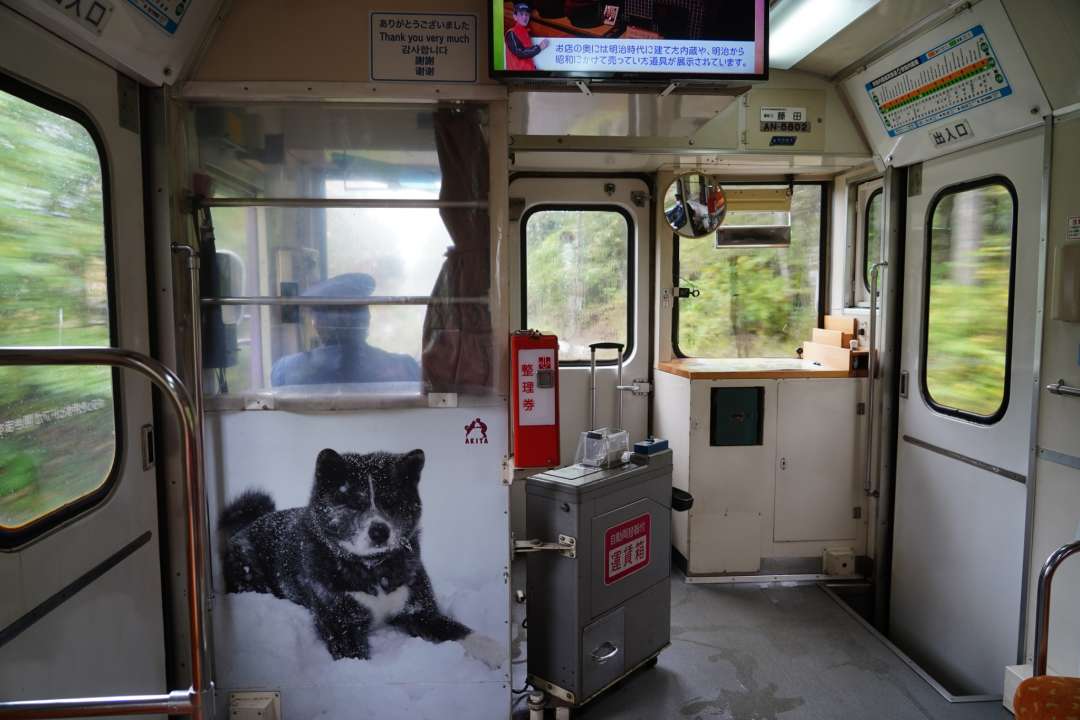
For each prefecture, be sure to do research on the different train lines, and if holding one of the previously mentioned passes, which are Japan Railway operated, as getting these trains covered with the passes makes getting around the region easier.
Other available means of transportation in Tohoku
Even aside from the region’s extensive train network, it is possible to access and navigate Tohoku efficiently, thanks to various other means of transportation options. Travellers can easily reach Tohoku by air, with major airports like Sendai Airport, Akita Airport, and Fukushima Airport providing convenient gateways. To and from there, you will find plenty of domestic flights connecting you to other Japanese cities and international hubs.
Alternatively, buses offer a cost-effective way to reach Tohoku from Tokyo and other major cities. Once in the region, rental cars are a popular choice, providing the flexibility to explore remote areas. Tohoku also boasts an extensive network of local buses, trams, and taxis for urban and rural travel.
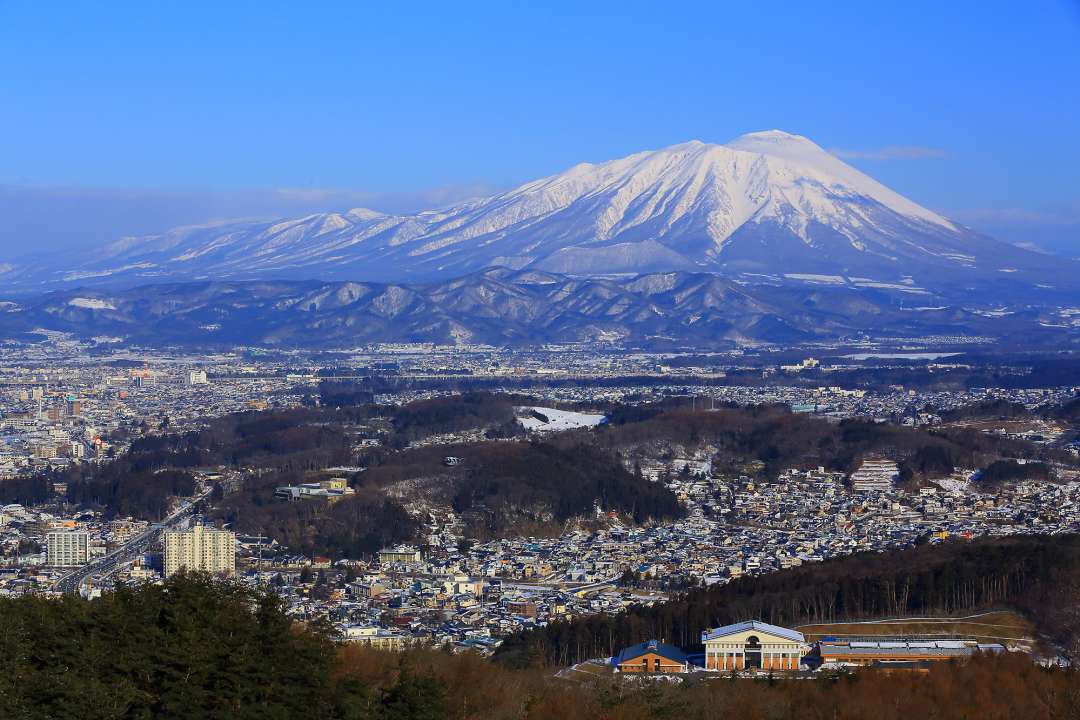
Within Tohoku’s main cities, subways and local trains are readily available. The region's well-organised public transportation and modern road networks ensure that visitors can comfortably access and move around Tohoku, making it an accessible and traveller-friendly destination for exploring its natural and cultural treasures.
Planning a trip to explore the Tohoku region’s gorgeous sights and rich cultural heritage? Discover tour options in the region and travel essentials for your trip on Japan Experience!
Make sure to follow us on Facebook, Instagram, and Twitter for the latest from Japan!

















































